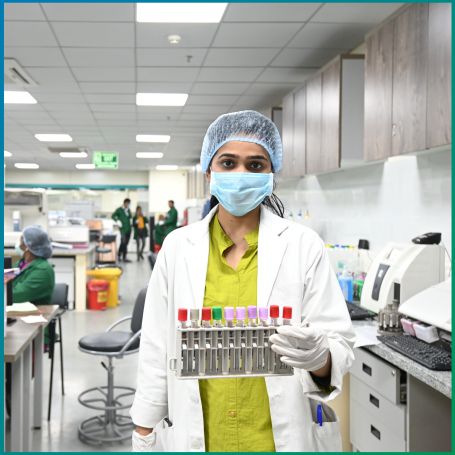
The C/S PD Fluid Test is a microbiological procedure used to detect and identify infections in the peritoneal cavity of patients on peritoneal dialysis.

The C/S PD Fluid Test (Culture and Sensitivity of Peritoneal Dialysis Fluid) is an essential diagnostic tool used to detect infections in patients undergoing peritoneal dialysis (PD). This test involves analyzing a sample of peritoneal dialysis fluid for microbial pathogens, including bacteria, fungi, and other microorganisms that may cause infections. Given that peritoneal dialysis patients are at higher risk of peritonitis and other infections, this test plays a crucial role in ensuring their health and guiding effective treatment.
1] Sample Collection - The first step in the C/S PD Fluid Test is the collection of a sample of peritoneal dialysis fluid. The fluid is obtained through the dialysis catheter that the patient uses for the dialysis process. This is done under sterile conditions to avoid contamination and ensure the accuracy of the test. The fluid is typically clear when it is free of infection, but cloudy fluid often indicates an infection, which will be further analyzed.
2] Culture and Incubation - Once the sample is collected, it is sent to a microbiology laboratory, where it is cultured on different types of media to encourage the growth of any bacteria, fungi, or other microorganisms present. The sample is incubated under controlled conditions for a period of 24 to 48 hours, during which time any potential pathogens will grow into colonies.
3] Identification of Pathogens - Once microbial growth is observed, the laboratory technicians will use a variety of techniques, such as Gram staining, biochemical tests, and sometimes molecular techniques like PCR, to identify the specific pathogens present in the sample. Common pathogens found in peritoneal dialysis fluid include Staphylococcus aureus, Streptococcus species, Escherichia coli, and Candida albicans.
4] Sensitivity Testing - Once the pathogen has been identified, the next step is sensitivity testing. This involves exposing the isolated pathogen to a range of antibiotics or antifungal agents to determine which treatments are effective in inhibiting its growth. This is an essential part of the test, as it allows healthcare providers to prescribe the most appropriate treatment based on the specific infection.
5] Reporting Results - After culturing, identification, and sensitivity testing, the laboratory will provide a comprehensive report with the identified pathogen(s) and their sensitivity profile. This report is typically available within 48 to 72 hours, allowing healthcare providers to initiate targeted treatment and manage the infection effectively.
1] Peritonitis: The most common infection in PD patients, typically caused by bacterial pathogens like Staphylococcus aureus, Streptococcus species, or Escherichia coli.
2] Catheter-related infections: Infections that can develop around the dialysis catheter, often leading to peritonitis or local abscess formation.
3] Fungal Infections: In patients with immunocompromised conditions, fungi like Candida can infect the peritoneal cavity.
4] Other Gastrointestinal Pathogens: In some cases, parasites or other gastrointestinal infections may present in the peritoneal fluid.
Choosing best pathology lab test in Pune for the C/S PD Fluid Test ensures precise and reliable diagnosis for peritoneal dialysis patients at risk of infections like peritonitis. Diagnopein’s state-of-the-art laboratory facilities, combined with an expert team of microbiologists, offer rapid and accurate pathogen identification through advanced culturing techniques. They provide detailed sensitivity testing to guide the most effective antibiotic or antifungal treatment, reducing the risk of complications and ensuring targeted therapy. With a focus on patient care, Diagnopein delivers fast turnaround times, high-quality results, and excellent customer service, making it the preferred choice for healthcare providers and dialysis patients seeking accurate and efficient diagnostic solutions.
1. Culture Method
2. Sample
3. Colony Count
4. Organism(s) Isolated
5. Culture Report: Culture yields growth of
6. Culture isolated after 7 days :
7. Culture isolated after 14 days:
8. Culture isolated after 21 days:
9. Ampicillin
10. Amikacin
11. Amoxicillin clavulanate
12. cefoperazon+sulbactam
13. Cefuroxime
14. Cefepime
15. Cefotaxime
16. Ciprofloxacin
17. Ertapenem
18. Gentamicin
19. Imipenem
20. Meropenem
21. Norfloxacin
22. Nitrofurantoin
23. Piperacillin-tazobactam
24. Trimethoprim-Sulfamethoxazole (Cotrimoxazole)
A positive result means that an infection has been identified in the peritoneal fluid. The lab report will include the type of pathogen and its sensitivity to various antibiotics, helping guide treatment.
A sample of peritoneal dialysis fluid is collected through the dialysis catheter, then sent to the lab for culturing and sensitivity testing to identify pathogens and assess their antibiotic resistance.
It is performed when a patient on peritoneal dialysis shows signs of infection, such as cloudy fluid or abdominal pain. The test helps identify the cause of infection, such as peritonitis, and determines the most effective treatment.
The test involves a simple fluid collection from the peritoneal dialysis catheter, which is typically not painful. However, mild discomfort may occur during the collection process.